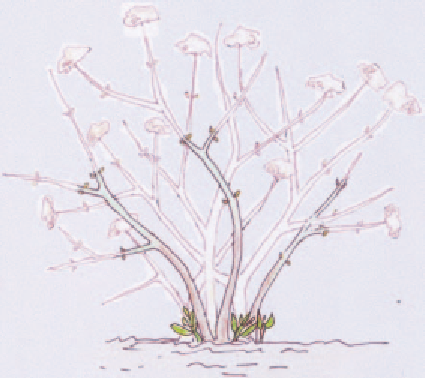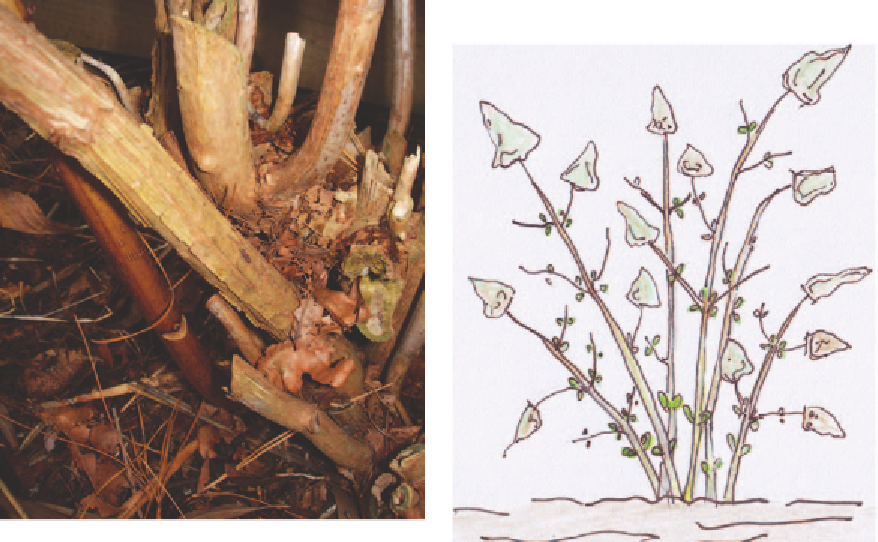Agriculture Reference
In-Depth Information
new growth to ripen and produce flower, just
later in the season.
Hydrangeas:grouptwo
Hydrangea paniculata
and
H. arborescens
and
their cultivars, all flower on the current
season's wood; that is, the buds that are
produced in spring will carry the flowers of
that season. The time of pruning is the same
as for other hydrangeas, dependent on
climate (see Figure 4.51).
Prune back the stems depending on how
large you want your shrub to be. These shrubs
can be cut to the ground safely once
established, but it keeps the shrub small.
Alternatively, prune the stems by about a
Figure 4.49
To renovate an older shrub, remove very old
stems and shorten back the younger ones by a third.
Figure 4.50
Old stems should be cut out completely to
avoid this tangle of dead stems. It is easy to identify the
old stems as they are pale and crusty as opposed to the
darker young stems. A pruning saw can allow better
access in this tight spot.
Figure 4.51
The
H.paniculata
and
H.arborescens
species are typified by their thin stems. They flower on
the wood formed on the current season and require
harder pruning.


